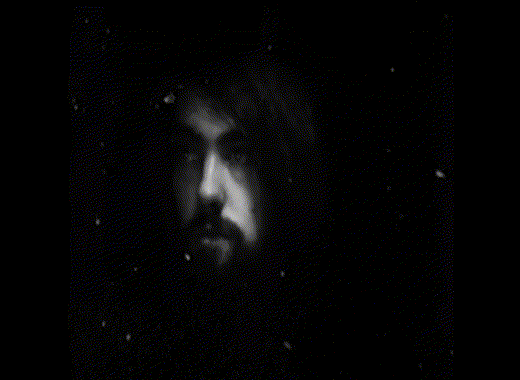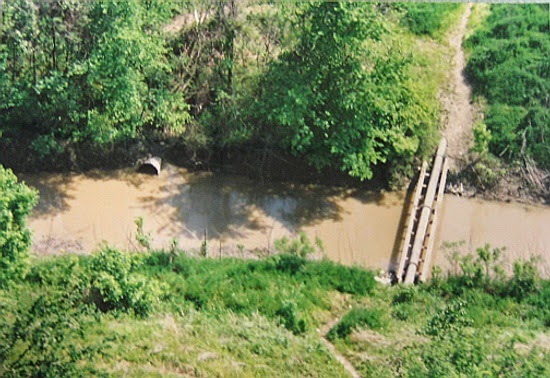Blu-Ray Review: “The Other Side of Madness” (1971)
By: James Swift
In the vast pantheon of Charles Manson-inspired movies, 1971’s The Other Side of Madness — later re-released as The Helter Skelter Murders — remains one of the lesser known, even to hardcore cult cinema afficianadoes.
With The Film Detective’s 50th anniversary Blu-Ray re-release of the film, however, Frank Howard’s unorthodox docudrama finally has an opportunity to garner a wider audience — even if it does come a year and some change late for the 50th anniversary of the infamous Tate-LaBianca murders.
There’s no denying that the 4K restoration of the original 35mm print looks impressive. Indeed, the film’s black and white cinematography already looked pristine back in the VHS era, so to see it given such a beautiful transfer here is certainly a feast for the eyes. Even if you don’t like the structure or execution of the film itself, you can at least appreciate it for its artistic merits; for a pre-Texas Chainsaw Massacre exploitation outing, The Other Side of Madness looks downright avant-garde, with aesthetics comparable to the finest European neorealist works of the late 1960s.
It’s lofty praise, but it’s certainly deserved. The opening scenes of The Other Side of Madness call to mind the best works of Antonioni and Rossellini, with perhaps a smidge of that Bergman glow thrown in there for good measure.
There is virtually zero dialogue in the first ten minutes of the movie. Rather, the camera lingers on an atmospheric wide shot of Beverly Hills, with a chorus of chirping crickets interrupted by the abrupt, metallic sounds of gunfire. From there, the movie segues into an exceptionally funky, hippie-dippie opening song with the credits superimposed over an image of a spider devouring moths in a web.
Howard’s exquisite camerawork is even more evident in the movie’s next scene, which focuses on two bored females making shadow puppets on a jailhouse wall while Manson’s “Mechanical Man” (“Because I have my family to look out for, I am a mechanical boy,” the abstruse lyrics go, “the past is an illusion, postulated mocked up through confusion”) pumps and pulsates over the imagery.
Producer Wade Williams no doubt knew the cinematography was far and away the best aspect of The Other Side of Madness. When the film was first released, he told the few media outlets that even acknowledged the film’s existences that it was made using “Auramation” — in his words, a “special cellular film treatment designed to heighten or depress the emotions of the viewer by subliminal monochromatic suggestion.”
Whether or not that’s true or mere marketing puffery, I suppose, is an aside (for the record however, Howard later admitted that it was all made up.) “Subliminal monochromatic suggestions” or not, the camerawork in The Other Side of Madness — particularly, the use of shadows and contrast — is among the most beautiful you’ll ever see in a microscopic-budget exploitation from the era.
Of course, it would be a bold-faced lie to say that the acting, pacing and structure of the film matches the quality of its cinematography. From a narrative perspective, the movie is a jumbled mess, haphazardly cutting between flashbacks to the Spahn Movie Ranch (which actually WERE filmed at the Spahn Movie Ranch, less than a year before it was burned to the ground) and some very stilted courtroom sequences. One moment were watching hippies skinny dipping and smoking grass at an impromptu hillside rock and roll concert — complete with our Manson stand-in giving pro-rape lectures and saying things like “women are only storehouses for love” and “she’s not complete until she’s filled” while his acolytes snort various controlled substances up their nostrils — and the next, we’re watching what feels like the slowest, most lethargic episode of People’s Court ever filmed. (As a side note, the movie was filmed while the murder trial was still ongoing, so a lot of the key details of the homicide case present in subequent Manson family members aren’t present in this one.)
There isn’t even any references to Sharon Tate until almost the 30-minute mark of the movie — via a scene that includes a faux Technicolor transition that comes off as more hokey than striking — but the visualization of Manson’s race war reveries does produce arguably the most memorable moment of the entire movie: an apocalyptic dramatization of the prophesied “Helter Skelter” uprisings depicting a squad of black paramilitary forces gunning down white women at random, then firebombing the homes of the elderly and stealing tires and lawnmowers from a nearby department store.
After another scene in which Manson expounds upon his indecipherable preachings — at one point going on a monologue about how “Satan is god and god is Satan” — the film reverts back to black and white for an extraordinarily creepy scene in which his acolytes slowly slink their way through Cielo Drive a’la the ghouls in the original Night of the Living Dead.
Compared to other Manson movies, however, the depiction of the notorious murders is relatively tame, with the killings shot in a slow, plodding manner from very oblique angles. Most of the violence is never actually shown on screen, but implied through disembodied sounds — and what blood is spilled before the camera certainly doesn’t ring all that realistic.
The film’s somber, unflinching finale is ultimately too unemotional to really be described as sadistic — as would be the case in other films such as 1997’s The Manson Family or 1984’s pioneering “found footage” shlocker Manson Family Movies. It seems like the bulk of the grand finale just involves the murderers pacing around these humongous interiors aimlessly, and to say the acting leaves a lot to be desired would be putting it mildly (indeed, the actors herein don’t even know how to stab convincingly, delivering blows that would barely be enough to carve up a pancake, let alone a coffee heiress.)
The film, however, does end on a high note of sorts. After all of the murders are over, we watch the perpetrators mop up all of the bloodspill in a scene that certainly radiates a sense of consequence and guilt that most exploitation movies from that era lacked. And the movie’s parting shot — a lingering close-up of Tate’s corpse, with Manson drolly stating “If I am dead, you are dead” over the soundtrack — is genuinely chilling. (Of course, the film’s disclaimer afterwards — warning the audience about recreational drug use possibly leading to mass homicide — does tend to cushion that emotional blow considerably, however.)
In that, it’s difficult to describe The Other Side of Madness as a “good” movie in a truly objective sense, but one thing is for sure — it’s definitely an interesting movie and one that never becomes too stationary for its own good. There are obviously much better and more effective movies out there about the murders, but this one definitely holds its own thanks in no small part to its captivating cinematography — which, again, looks downright awe-inspiring in The Film Detective’s stunning 4K transfer.
As for the Blu-Ray special edition itself (priced at $29.95, whereas the standard DVD special edition is priced at $21.95), you really can’t complain about the extra features contained herein. In addition to two great mini-documentaries featuring insight from Williams, the Blu-Ray set also includes a bonus CD featuring actual music from Charles Manson and a 12-page booklet with an essay penned by German filmmaker Alexander Tuschinski. Among a litany of interesting tidbits about the film’s production (the director actually met with Charles Manson while he was in jail to ask his permission to use his music in the movie, and in the courtroom scenes, there actually are a few moments where you can see the legal team that actually was involved in the murder trial), Tuschinski does about a good as job as anyone describing the artistic merits of what, on the surface, seems to be yet another exploitation cheapie.
“The combination of elegant black and white cinematography, voice-over monologues, music and various effects creates an almost hypnotic feeling in many parts,” he writes. “The resulting coherent structure is a testament to director Frank Howard’s skills at improvisation.”
While I wouldn’t go as far as Tuschinski does in describing the film as a low-key New Hollywood classic on par with Easy Rider, there’s no denying that The Other Side of Madness is indeed an impressive artistic achievement.
Of course, whether or not that sheer visual impact is enough to override the film’s shortcomings when it comes to narrative structure, acting and pacing is something the viewer will have to decide for him- or herself. At the end of the day, you may not enjoy The Other Side of Madness as a complete motion picture experience, but strictly in terms of aesthetic presentations? It’s no doubt one of the most unexpected visual tour de forces in the history of American exploitation films, and for that reason alone it’s likely worth going out of your way to experience at least once.
The Verdict: While the film itself certainly falls into the doldrums here and there, The Film Detective packed enough bonus material into the package to make the re-release of The Other Side of Madness a worthwhile acquisition for any hardcore, Manson-ploistation enthuasiast — or anyone with a penchant for very obscure and very artistic grindhouse-caliber flicks largely forgotten by the ravages of time. As long as you’re not expecting an acting tour de force, you’ll likely be able to appreciate The Other Side of Madness for its visual qualities alone. It might not be a great film, per se, but it’s certainly a great-looking film, with vivid black and white imagery that looks nothing short of spectacular in high-gloss 4K resolution.
Rating: 7.1 out of 10




Comments
Post a Comment